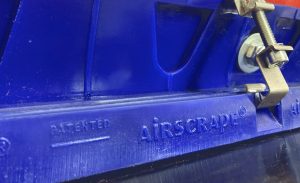ASPASA has published a detailed guideline to help quarries deal with dust at their operations. In its meetings held with the regulator, the Department of Mineral Resources and Energy (DMRE), ASPASA says it has become clear that dust is a problem that needs to be addressed.
“The document is therefore an attempt to give some guidelines on what can be done at ASPASA member quarries to mitigate dust,” says Nico Pienaar, director of ASPASA.
Here are some of the important excerpts from the guideline:
- What should a quarry/plant manager do?
First of all, forget the regulations and standards that you don’t really need to know to solve your problem. Think about dust control in terms you understand. Dust and spillage occur because the material in handling and processing systems leaks. Plug the leaks and you will put more tonnes into trucks. When you start to think about controlling the process you are much more likely to come up with practical solutions that are easy to integrate into your operations.
- Good process control is good dust control
Good process control and good dust control are just two sides of the same coin. There are lots of ways to make more money by complying with regulations. There are several examples where quarries have been paid to use waste products as dust suppressants – especially for roads. This allows the chemical company to avoid the higher cost of disposal.
If you don’t understand the relationship between process and pollution control, you are much more likely to make mistakes that will ultimately cost production and lose money. On common error is to spend as little as possible on the environment.
Don’t make the other common error, waiting until you get forced to comply. That’s a sure way to develop an adverse relationship with your neighbours and the state that will add penalties and fine to your list of accomplishments. If you don’t solve the problem, the regulators will do it for you by forcing the plant to use control measures that are much more costly and cumbersome.
Instead of whining about environmental compliance, find ways to turn the lemon of regulation into lemonade of profits. Believe it or not, dust control measures are actually good for production.
For example, choke feeding a crusher not only maximises its productivity but also keeps the dust down because the machine is moving more rock and less air. Likewise, operating the plant smoothly at a consistent rate improves production with no down time when crushers “windmill” and really kick up more dust.
There are all kinds of simple things you can do that don’t cost a dime and can have a big impact on dust levels. But it all has to come from the top down. There are many companies that peacefully co-exist with their neighbours.
Operating practices can control dust and increase production
One of the most effective tools you can use to control dust is good operating practices. The great diversity of methods and machinery used to produce sand, stone and gravel. Every plant seems to do something just a little bit different. But one thing all plants that have successfully complied with air quality standards have in common are operators that have been trained to take personal responsibility for dust control. They are your front line in the battle to protect the environment and improve production.
Learn more in the next edition of Quarrying Africa.





